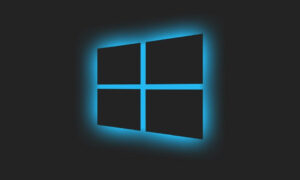Operating Systems (OS) play a pivotal role in shaping the digital landscape, and among the most influential contenders are Apple’s Mac OS and the versatile Linux OS. Both possess distinct features, advantages, and philosophies catering to different user preferences. Exploring these operating systems reveals a diverse array of functionalities and capabilities, allowing users to make informed decisions based on their specific needs and preferences.
1. Foundations and Origins
Mac OS: Initially introduced in 1984, Mac OS, later rebranded as macOS, is a proprietary operating system developed exclusively for Apple’s hardware lineup. Its genesis lies in a graphical user interface (GUI) coupled with a Unix-based foundation, blending elements of the Mach kernel with components derived from BSD.
Linux OS: Linux emerged in 1991 through Linus Torvalds’ initiative, showcasing the epitome of open-source development. Its hallmark is the Linux kernel, serving as the core component in numerous distributions (distros) such as Ubuntu, Fedora, Debian, and others. Linux’s open-source nature allows for extensive community contributions and diverse adaptations to suit varying user requirements.
2. Kernel and Architecture
Mac OS: macOS’s underpinning is rooted in a Unix-based architecture. It leverages the Mach kernel while integrating several BSD components, ensuring robustness, stability, and security. However, its closed ecosystem confines its usage primarily to Apple’s proprietary hardware.
Linux OS: Linux’s strength lies in its modularity and wide hardware support facilitated by the Linux kernel. Being open-source, it encourages collaboration and customization, enabling seamless integration across diverse hardware configurations, from personal computers to embedded devices and servers.
3. User Interface and Customization
Mac OS: Renowned for its elegant and user-friendly interface, macOS offers a consistent experience across Apple devices. However, customization options are relatively restricted compared to Linux, reflecting Apple’s emphasis on uniformity and ease of use.
Linux OS: The essence of Linux lies in its versatility and extensive customization capabilities. Various distributions offer diverse desktop environments, enabling users to tailor the system’s appearance, functionality, and behavior to align with their preferences.
4. Software Ecosystem

Mac OS: Apple curates software through the Mac App Store, ensuring quality and security. While a plethora of applications is available, certain specialized or open-source software might have limited availability within the macOS ecosystem.
Linux OS: Linux boasts a vast repository of open-source software accessible via package managers. This abundance, coupled with compatibility with programming tools and server applications, makes Linux an attractive choice for developers, enthusiasts, and system administrators.
5. Security and Stability
Mac OS: macOS is lauded for its robust security measures, including Gatekeeper, FileVault encryption, and regular security updates. The closed ecosystem contributes to its relative stability and protection against prevalent malware threats.
Linux OS: Linux benefits from continuous scrutiny by a large community, leading to prompt bug fixes and security updates. Its permission-based model and lower market share contribute to a reduced susceptibility to widespread malware attacks.
6. Support and Community
Mac OS: Apple provides comprehensive customer support for macOS users, ensuring a streamlined experience within its ecosystem. However, solutions might be constrained to Apple-certified hardware and software.
Linux OS: The Linux community is renowned for its robust support forums, extensive documentation, and collaborative spirit. Users benefit from a vast knowledge base contributed by enthusiasts and developers worldwide, fostering a helpful and inclusive environment.
7. Cost and Accessibility
Mac OS: The exclusivity of Apple’s hardware renders macOS relatively expensive, primarily targeting premium consumers investing in Apple devices.
Linux OS: Linux’s open-source nature ensures its free availability, making it accessible to a wide audience. Moreover, it can revitalize older hardware, offering a cost-effective solution for individuals and organizations seeking efficient computing without hefty expenses.
Exploring Further Resources:
For a comprehensive understanding and further exploration of Mac OS and Linux OS, consider referring to the following external resources:
Conclusion: Embracing Diversity in Operating Systems
In summary, both Mac OS and Linux OS offer unique strengths, serving diverse user needs and preferences. macOS excels with its seamless integration, polished interface, and robust security measures within the Apple ecosystem. Conversely, Linux’s openness, flexibility, and extensive customization options cater to enthusiasts, developers, and organizations seeking greater control and versatility in their computing experience.
Understanding the nuances and differences between these operating systems empowers users to make informed decisions based on their preferences, workflows, and specific computing needs. Whether it’s the sophistication of macOS or the flexibility of Linux, both OSes contribute significantly to the diverse landscape of modern computing.




